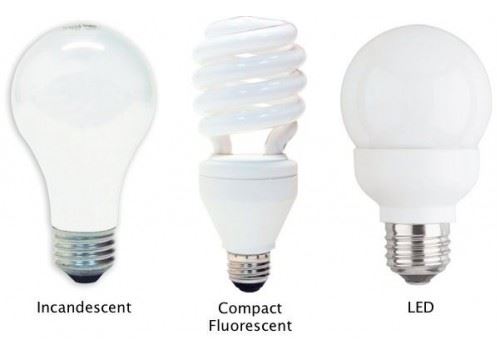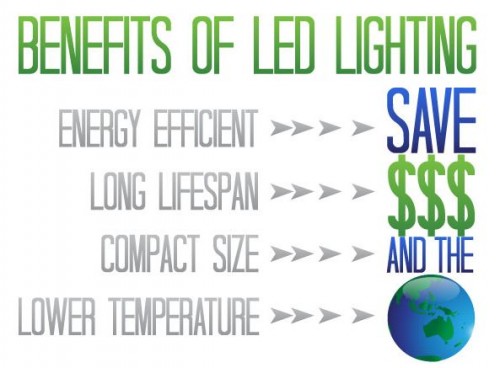In November 136 years ago, Thomas Edison filed his patent on the Incandescent Light Bulb after finding “over 3000 ways not to make one”. Since then the design has not really changed as far as efficiency is concerned. Sure you can get incandescent light bulbs in a multitude of colors, shapes and sizes, but their lifespan is rather short. And although the cost is minimal for the bulbs themselves, it is oftentimes expensive and painful to replace those bulbs that are located in 2-story foyers or other hard to reach places.
The CFL (Compact Fluorescent Light) was invented in 1976 by Edward Hammer, an engineer with General Electric, in response to the 1973 oil crisis. His idea, however, was shelved until the mid-1990’s because the cost to build the production factories was too expensive. The downside to CFL is that it gives off a yellowish light and also contains mercury which makes disposal an environmentally unfriendly option. Plus the lifespan of CFL is only around 3 to 5 years at best. CFL is what most of us have been using for the past couple of decades up until recently. I personally never used them simply because of the mercury they contained.
Discovered in the early 20th century, LED (Light-Emitting Diode) lighting was introduced as practical components in 1962 and is defined as an electronic source of light. Early LED devices emitted low-intensity red light. Remember the blinking light on your old telephone answering machine? That was an LED. Fast forward to the present and you’ll find that modern LEDs give us a much brighter, cleaner light source and is readily available across a number of wavelengths, including visible, ultraviolet and infrared. The bottom line is this: LEDs are the best way to bring light to life.
In first generation LED bulbs you could actually see the diode especially on ceiling recessed lights. That has now changed so that LED’s are supplying us with light that more closely resembles incandescent bulbs of yester year.
Advantages to LED bulbs
- Great light – a daylight bulb gives off a pure light similar to the sun
- Significantly less energy consumption
- Better energy conversion rate – 90% converted to light rather that 8% with an incandescent bulb (the waste being in heat emission).
- Long life – averaging between 17 and 22 years. Contains no mercury or lead which reduces our carbon footprint
The above information pertains to the light bulbs themselves, but light manufactures are now making LED lights with no bulbs to change. The fixture gets changed if it wears out rather than the bulbs. This kind of fixture also lasts 17 to 25 years so by that time you will most likely want to update it anyway.
Along with new fixtures and light bulbs, there is also an easy way to retro fit existing recessed light fixtures to LED. The kits to do this normally include a trim piece as well which makes the install look aesthetically pleasing.
I have installed LED bulbs throughout my entire home (recessed lights, chandelier, table lamps, under counter, and security light fixtures that run 24-7). Most of these are at least 5 to 6 years old and have continuously functioned with no problems. In my kitchen alone, I have nine feet of under-counter lighting, and two hanging lights over an island. All of these fixtures combined use less energy than what two 75-watt bulbs would use. I have seen a significant drop in my electric bill since moving to LED, and you can too! Just reach out to any of us here at Fred to help with updating your home to LED lighting. When your monthly electric bill arrives, you’ll be glad you did!


